Green Lynx Spider
Banana Spider
Banded Garden Spider
Regal Jumping Spider
Regal Jumping Spiders (Phidippus regius) are cute little fuzzy spiders typically found around immature woodland habitats. They can also be found hanging out on your windshield. Black and white features identify males. Females are grey or brown in color. These spiders may be expert jumpers, but they also produce a dragline in case they miss their target.
Males perform a romantic dance to woo the females. They show off their handsome leg fringe and bright metallic green chelicerae. If the lady is impressed, they will cohabitate in dried leaves such as old palm fronds. When the mating time arrives, the male does another type of romantic dance that is different from his courtship dance. During this dance, he shows off his dance moves and then plays a game of peek-a-boo with the female through the tent-like web. Once the female allows him in, he softly pets her several times before mating occurs. Quite the charmer, isn’t he?
When it comes time to lay eggs, the female will produce several nests under pine and oak trees. Several hundred eggs can be laid during this time. Babies will consume small invertebrates. While they may strike fear into other insects, they are relatively harmless to humans. Rough handling of the spiders may prompt a bite that can sting for several minutes before subsiding.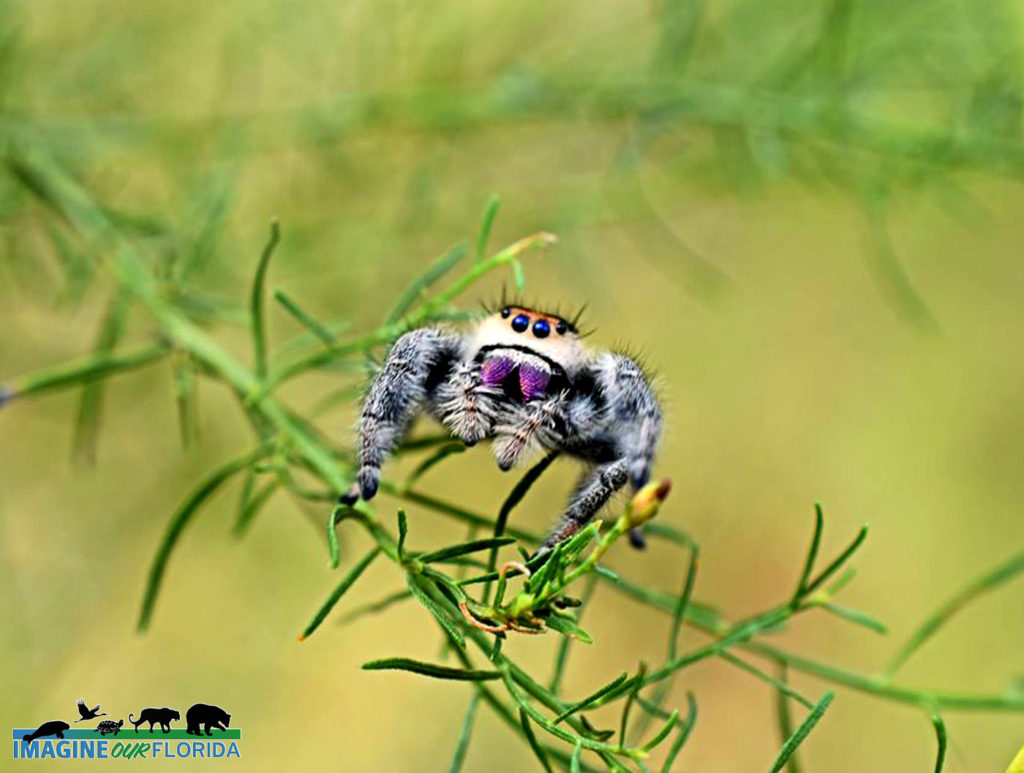
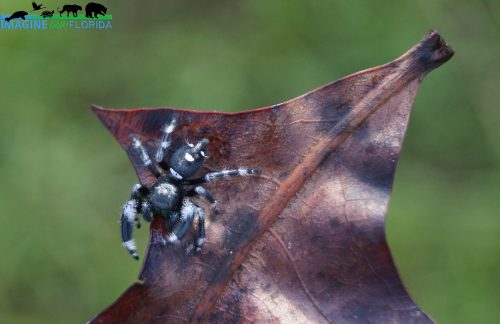
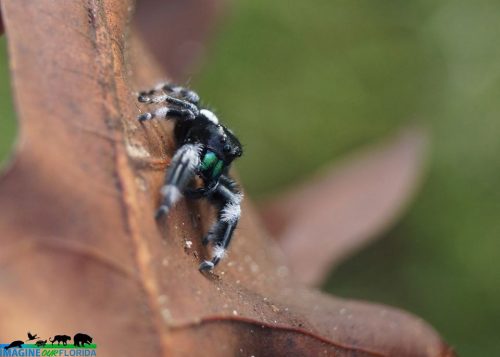
Golden Silk Orb Weaver
The Golden Silk Orb-Weaver (Trichonephila clavipes) is dreaded by hikers and bikers in the forest. Their sticky, golden webs, which can measure 6 1/2 feet in diameter, are spun in insect flight paths in open woods and at the edge of dense forests. You may run into them in your yard, where they are spun between trees and dense shrubs. The large webs catch flies, bees, wasps, moths, butterflies, male orb-weavers, and more. The prey is devoured by the spider, who is waiting patiently on the web.
Golden Silk Orb-Weavers are also known as Banana Spiders because of their yellow coloring. Their color variation, complete with furry-looking tufts on their legs, helps them blend into the forest. They are also known as Giant Wood Spiders because the females’ bodies are more than 1 1/2 inches and, including legs, can measure up to 5 inches in diameter. Males are significantly smaller, with bodies at about 1/4 of an inch.
The small males come out to mate between July and September. The females produce at least two egg sacs per year but have been known to produce up to nine. Each sac contains a few hundred eggs. The female often eats the male after mating.
Climate change has mildly affected these spiders’ behavior. Still, they have adapted by creating reflective carapaces and turning the cylindrical parts of their bodies towards the sun to reduce the heated body surface. They also reduce heat by holding a drop of water in their chelicerae (mouth-part) and allowing it to evaporate. This has allowed them to adapt very well to their environment.
The next time these little ones give you a scare, take a few minutes to appreciate their hard work. Golden Silk Orb-Weavers play an important role in our ecosystems. Orange and pecan farmers appreciate their cooperation in keeping pests away from harvests. These fascinating spiders provide insect control in our wild spaces and our yards.

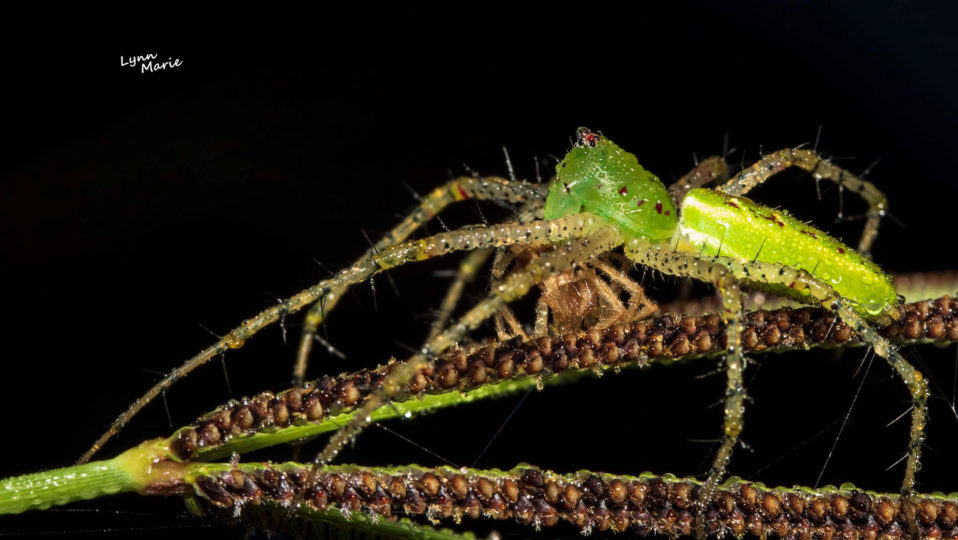
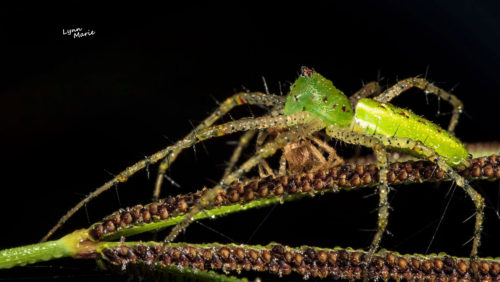
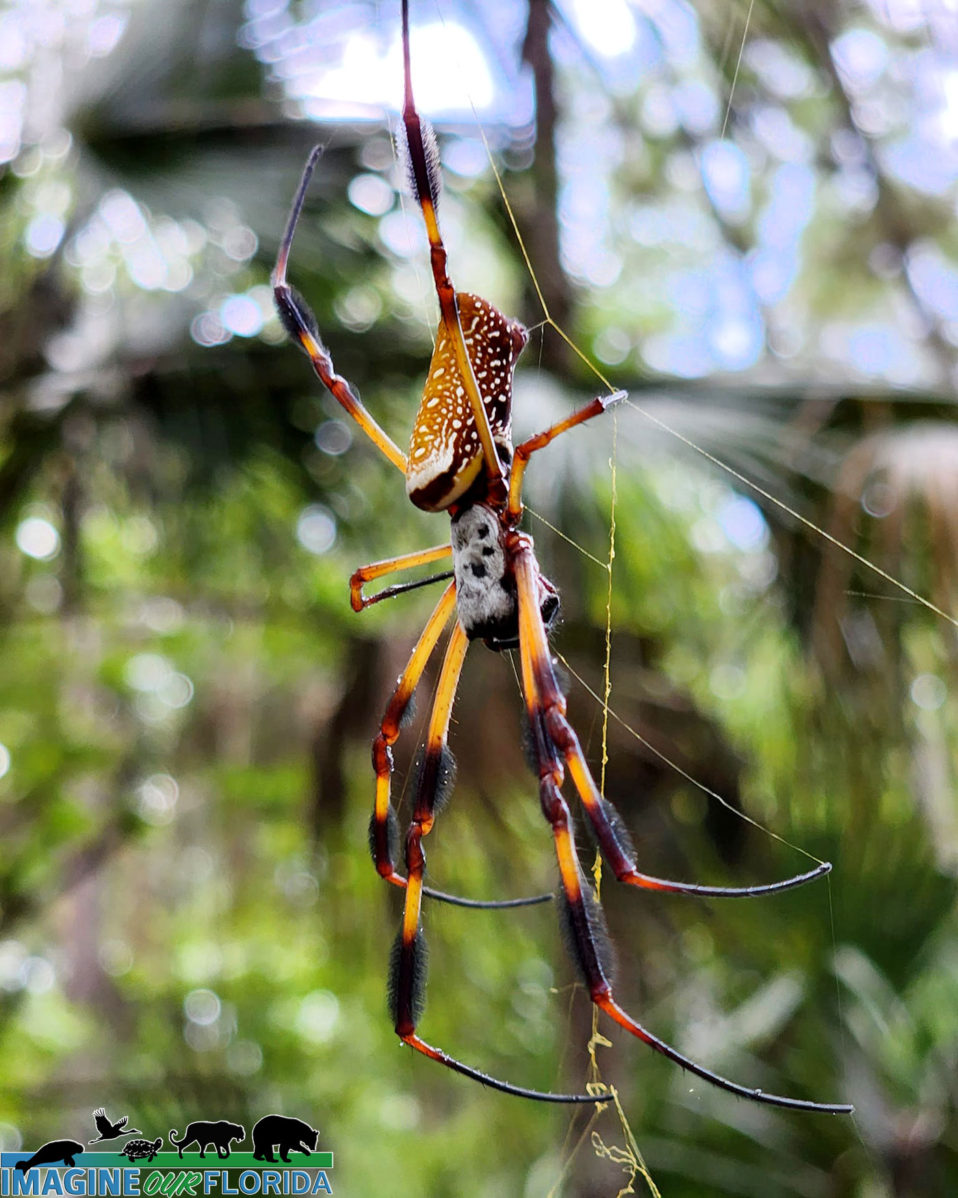
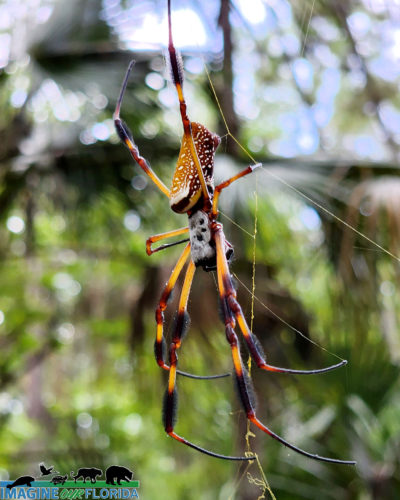
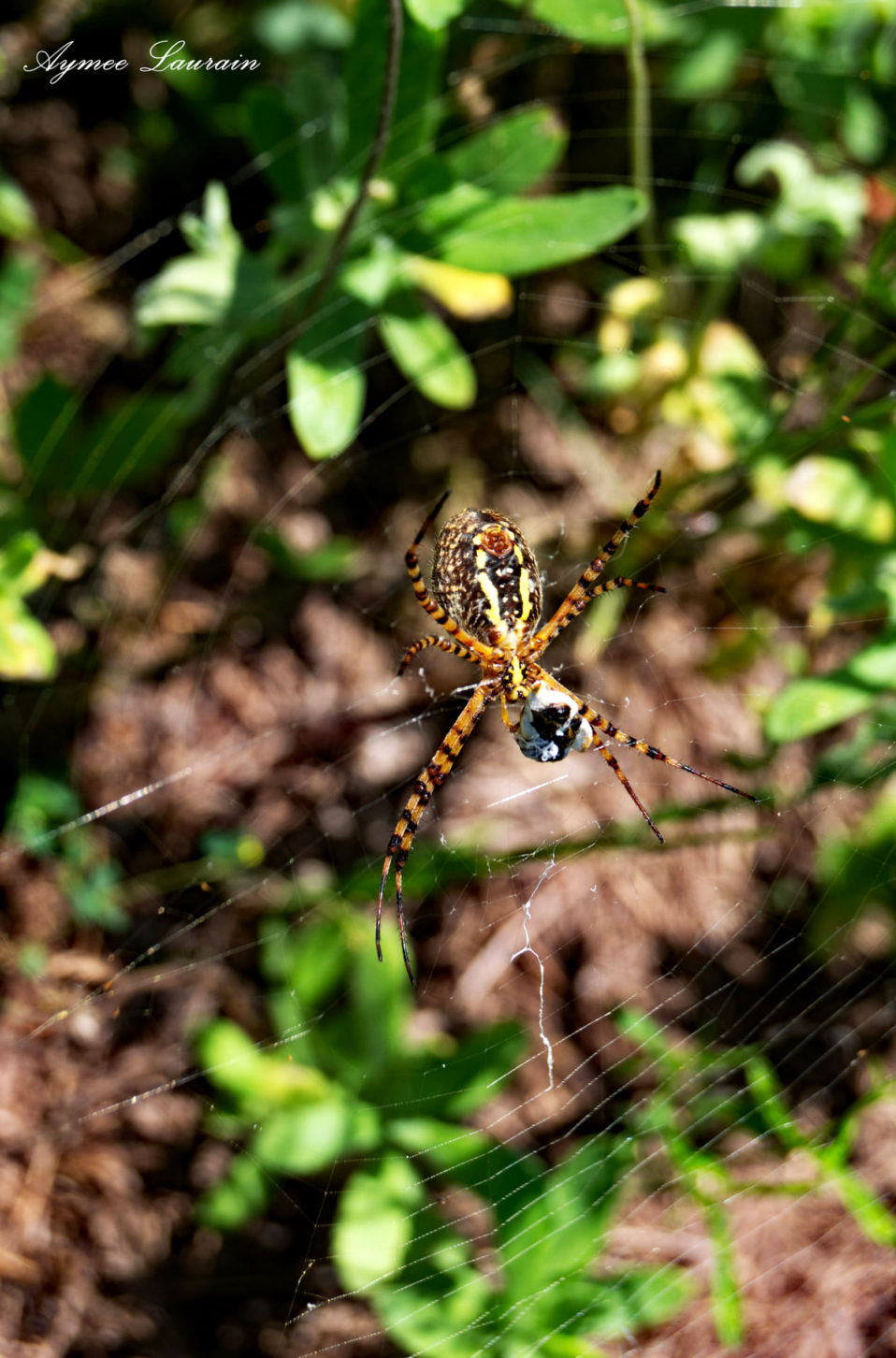
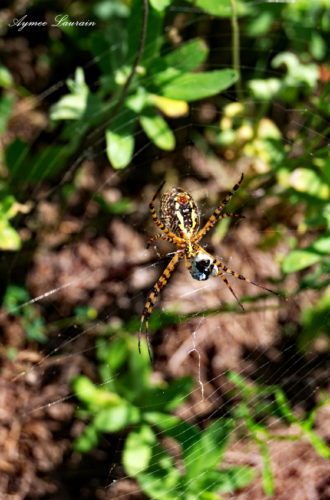
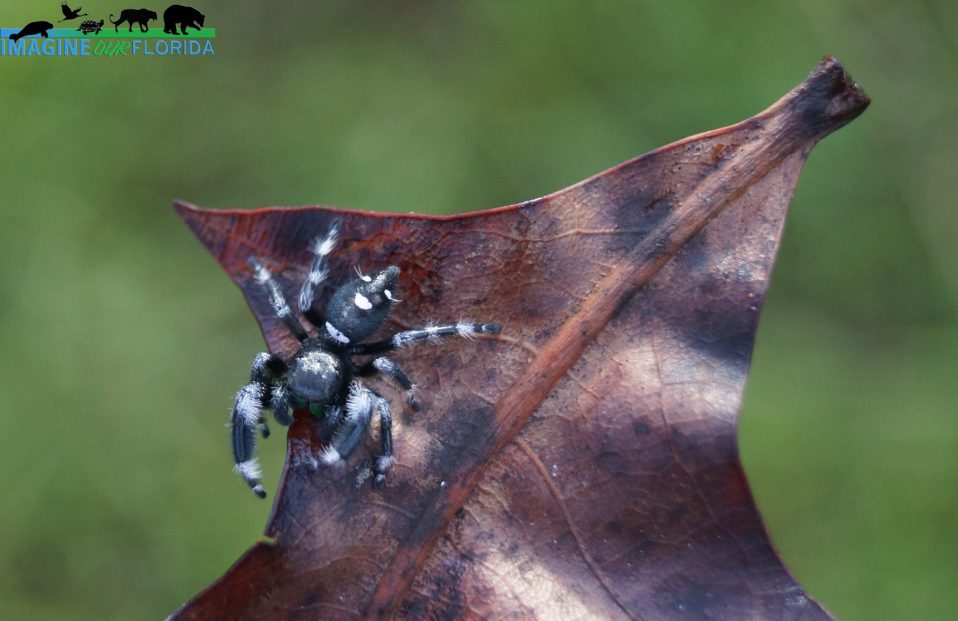
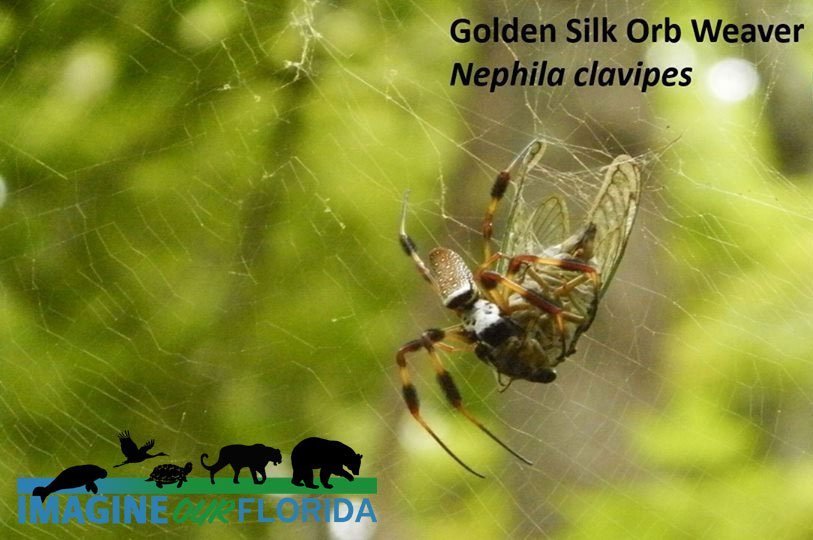
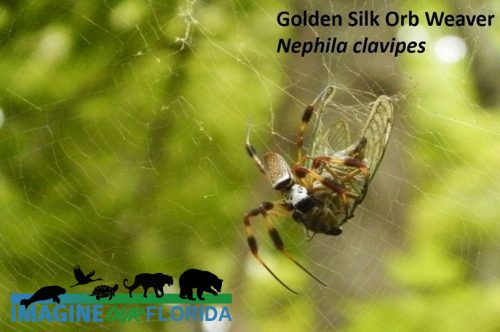
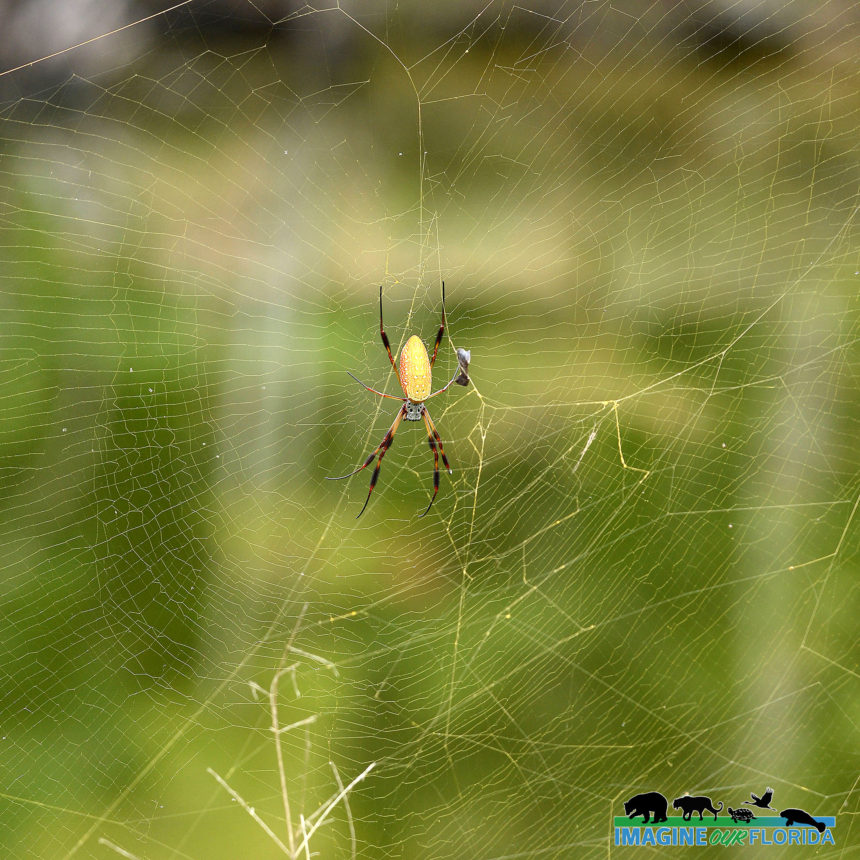
Recent Comments